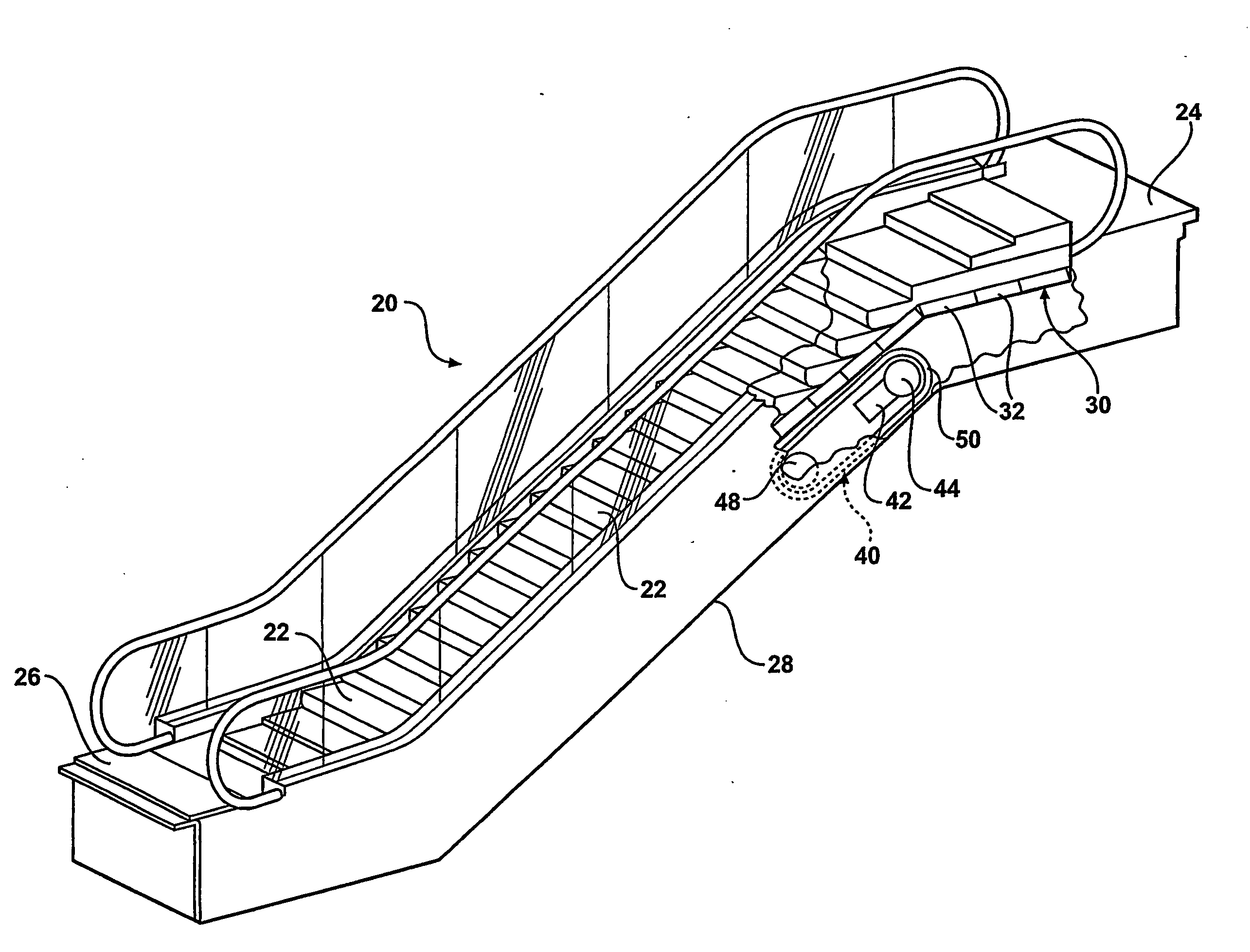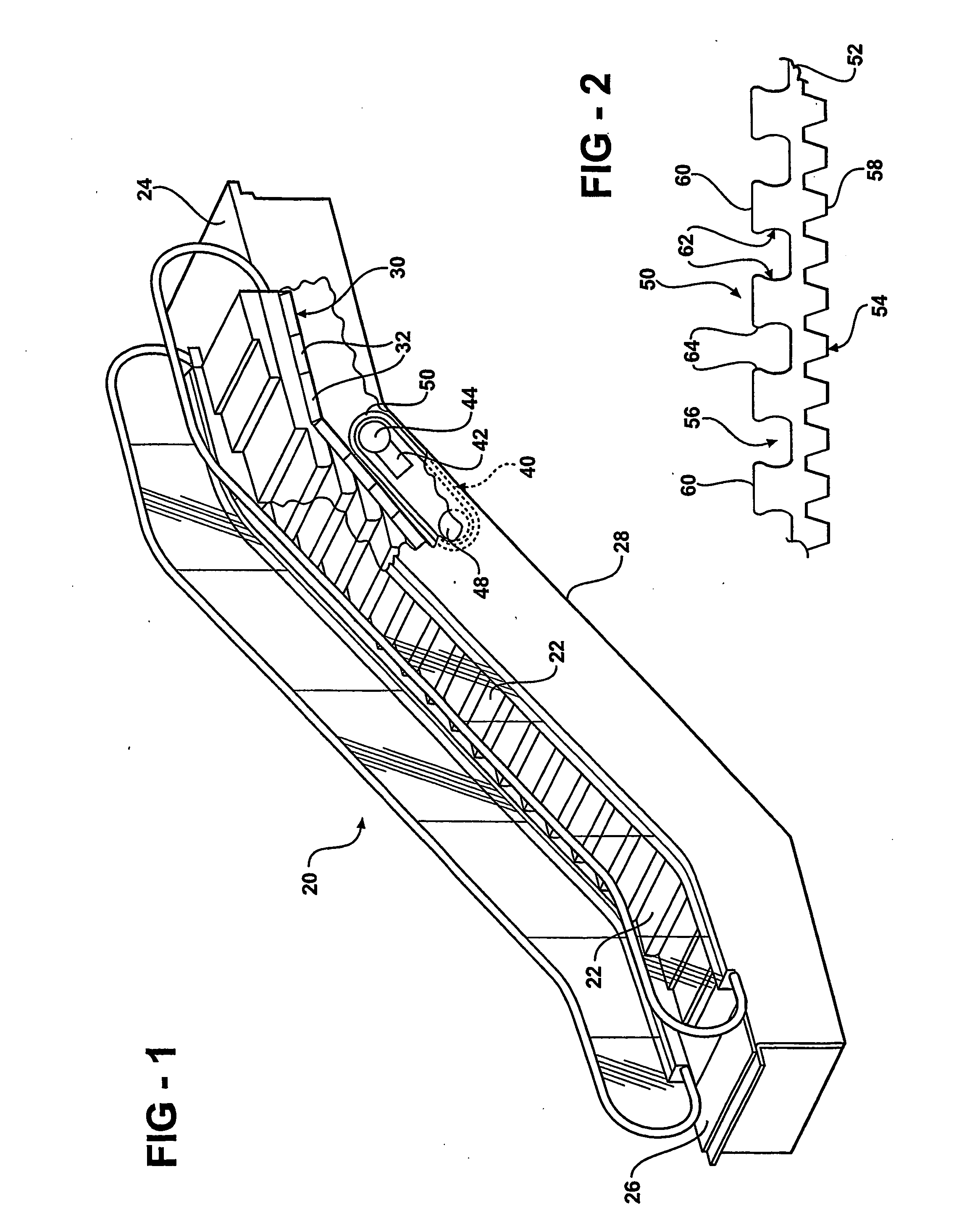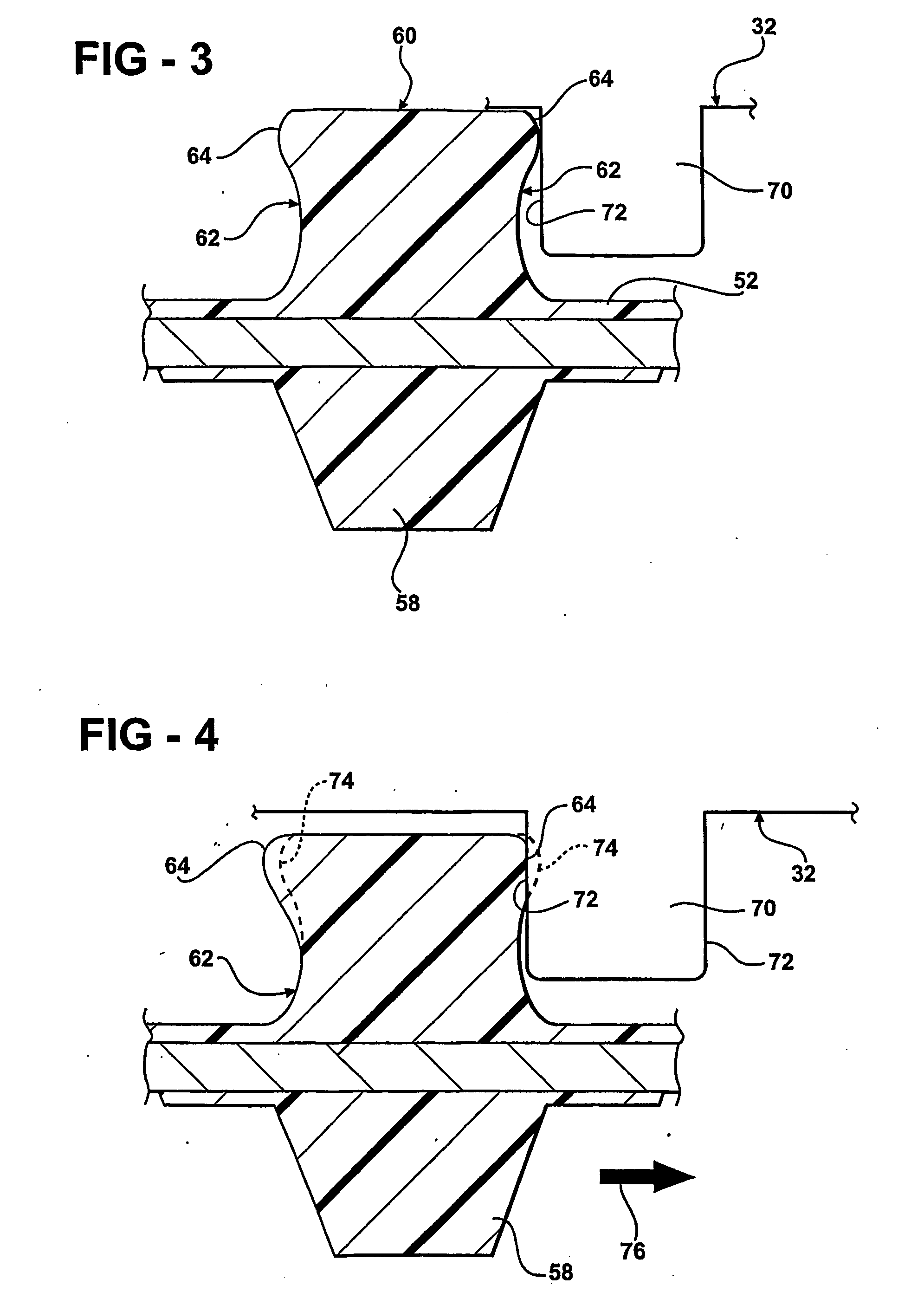Drive belt for a passenger conveyor
- Summary
- Abstract
- Description
- Claims
- Application Information
AI Technical Summary
Benefits of technology
Problems solved by technology
Method used
Image
Examples
Embodiment Construction
[0020]FIG. 1 schematically illustrates a passenger conveyor system 20, which is an escalator in this example. The invention, however, is not limited to escalators but is applicable to other types of passenger conveyors, such as moving walkways. The illustrated passenger conveyor system 20 includes a plurality of steps 22 that are movable along a loop so that the steps 22 carry passengers between landings 24 and 26.
[0021] A truss structure 28 supports the escalator system components in a known manner. A step chain 30 is associated with the steps 22 and is guided by the truss structure 28 in a known manner. The step chain 30 includes a plurality of step chain links 32.
[0022] A drive module 40 propels the step chain 30 and the steps 22 as required to move passengers between the landings 24 and 26. The drive module 40 includes a motor 42 that causes a drive sheave 44 to rotate at a desired speed. An idler sheave 48 rotates as known. Movement of the drive sheave 44 causes movement of a...
PUM
 Login to View More
Login to View More Abstract
Description
Claims
Application Information
 Login to View More
Login to View More - R&D
- Intellectual Property
- Life Sciences
- Materials
- Tech Scout
- Unparalleled Data Quality
- Higher Quality Content
- 60% Fewer Hallucinations
Browse by: Latest US Patents, China's latest patents, Technical Efficacy Thesaurus, Application Domain, Technology Topic, Popular Technical Reports.
© 2025 PatSnap. All rights reserved.Legal|Privacy policy|Modern Slavery Act Transparency Statement|Sitemap|About US| Contact US: help@patsnap.com



